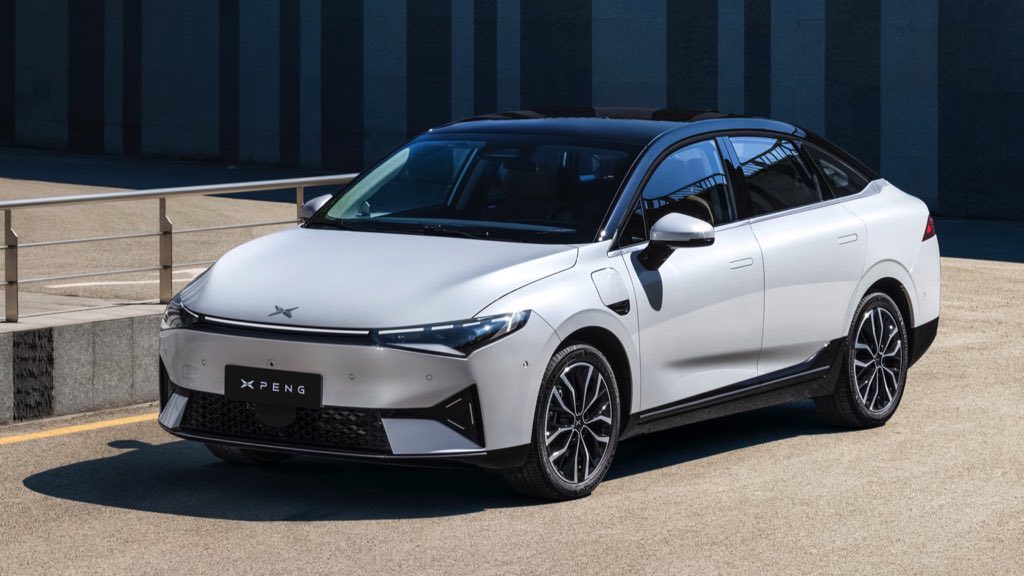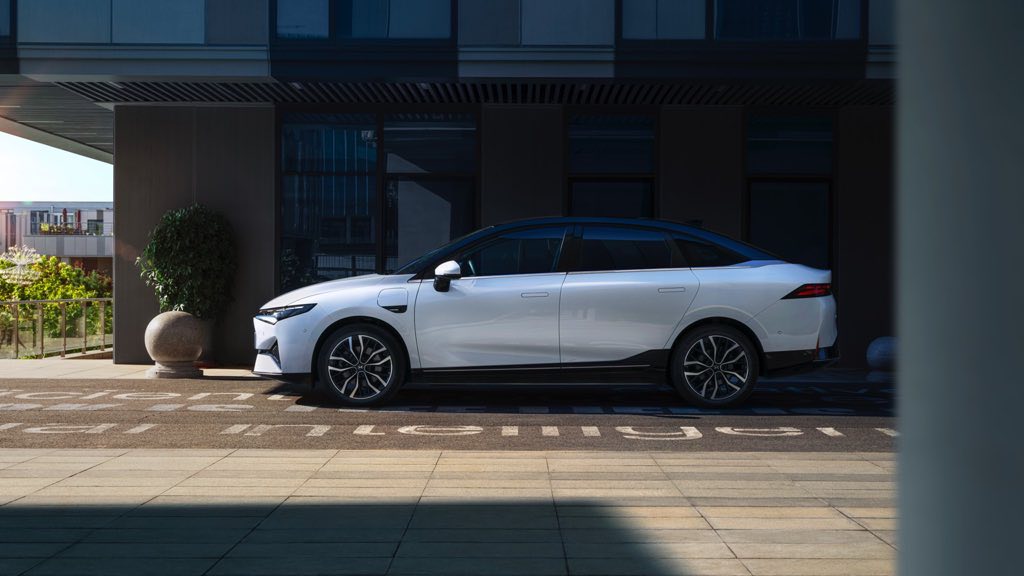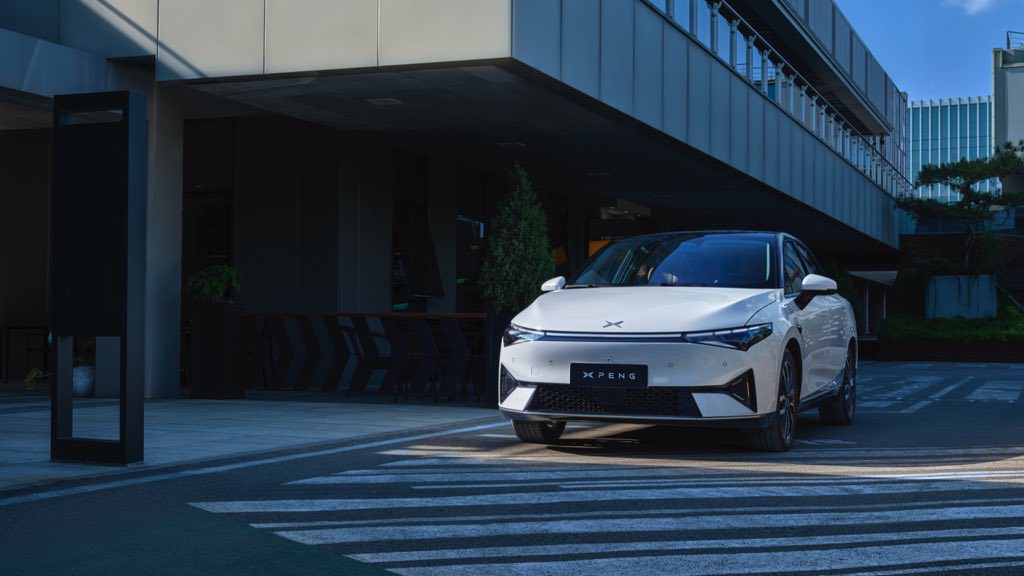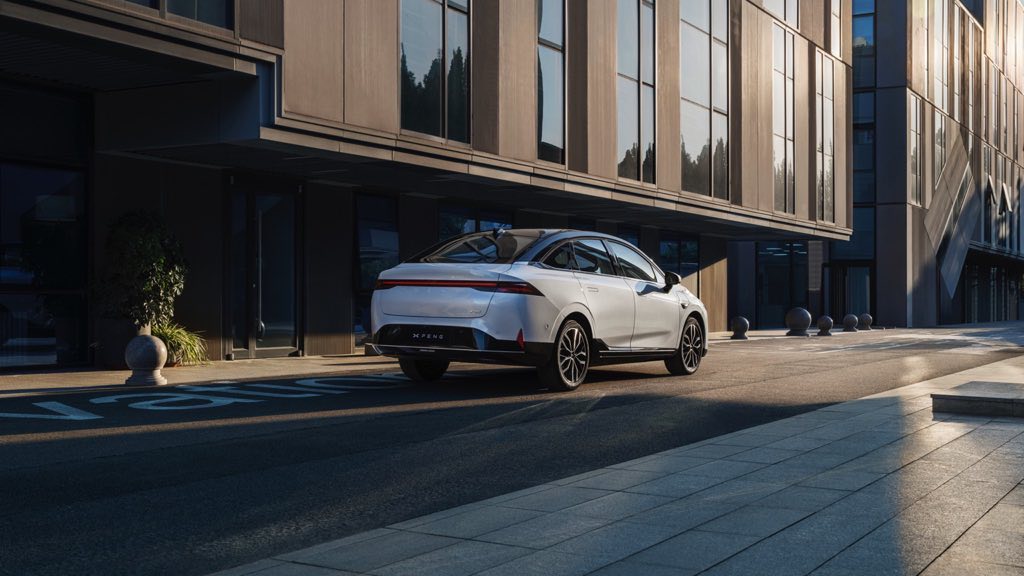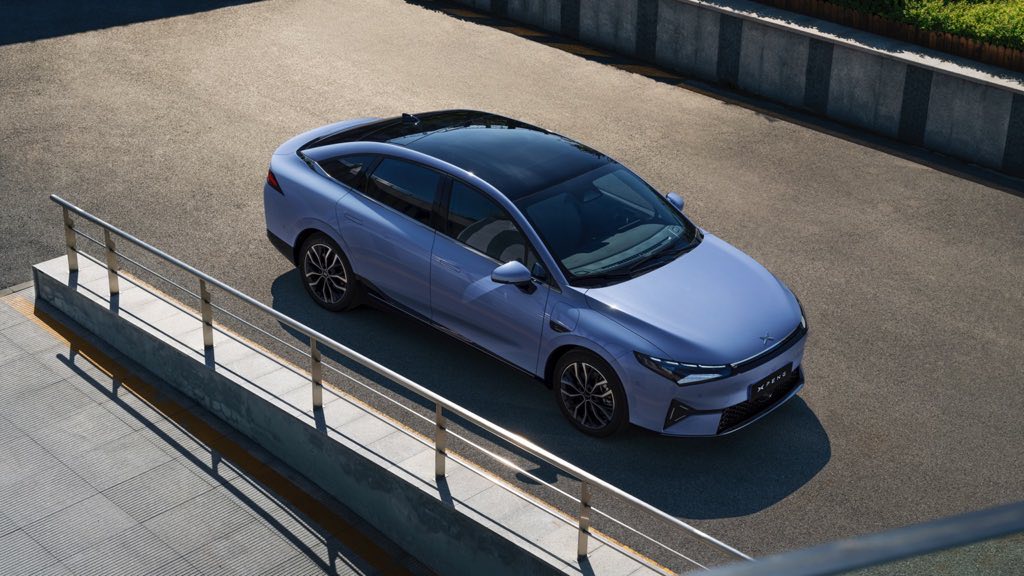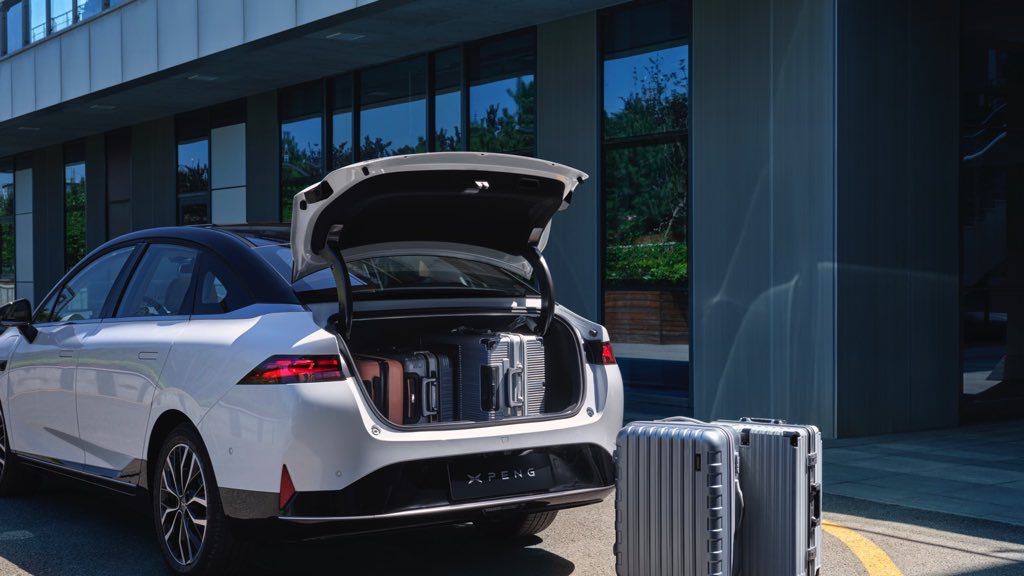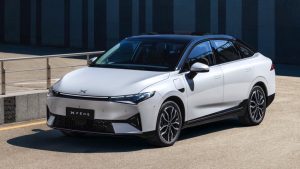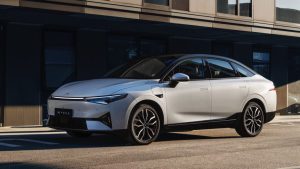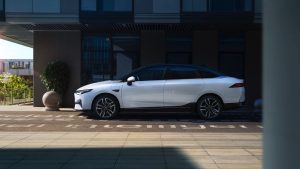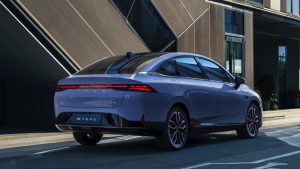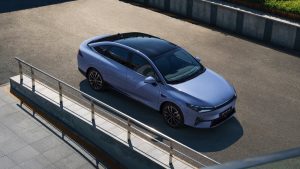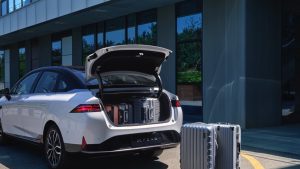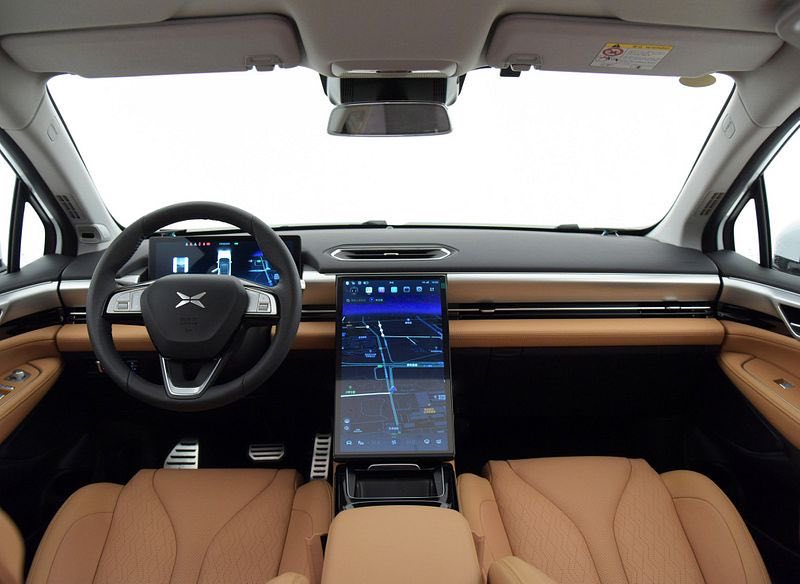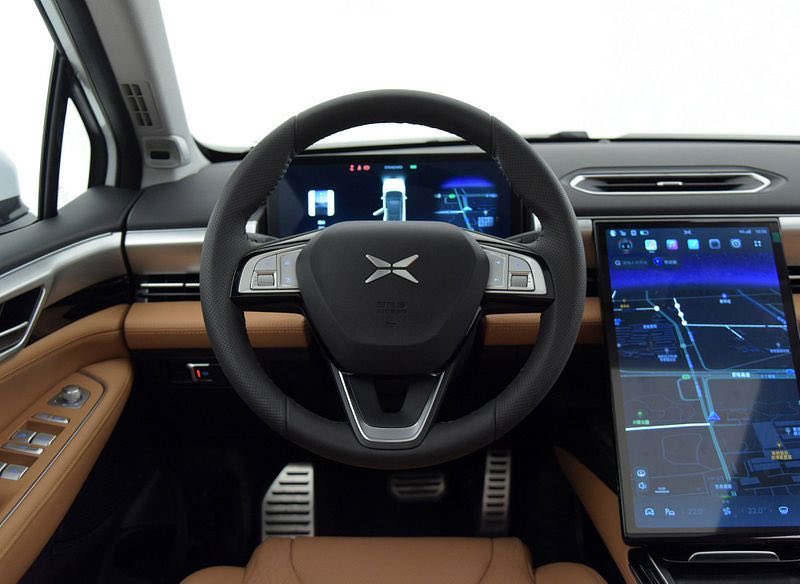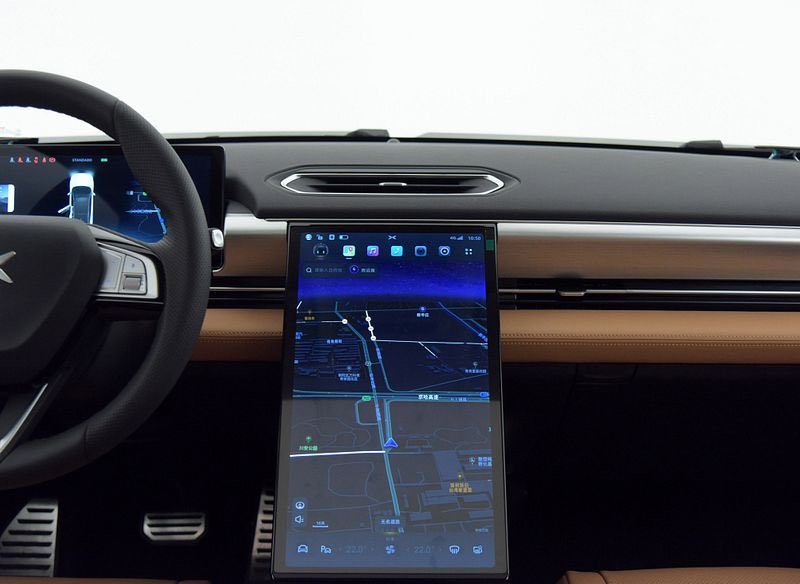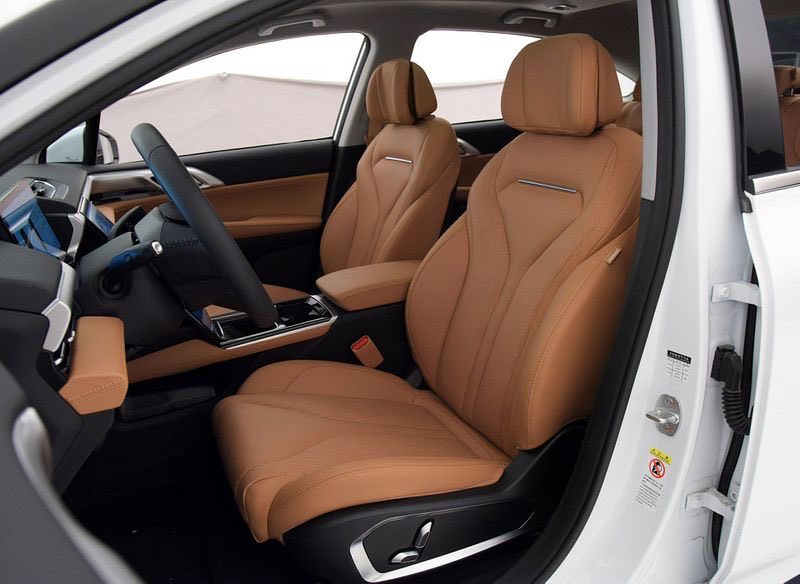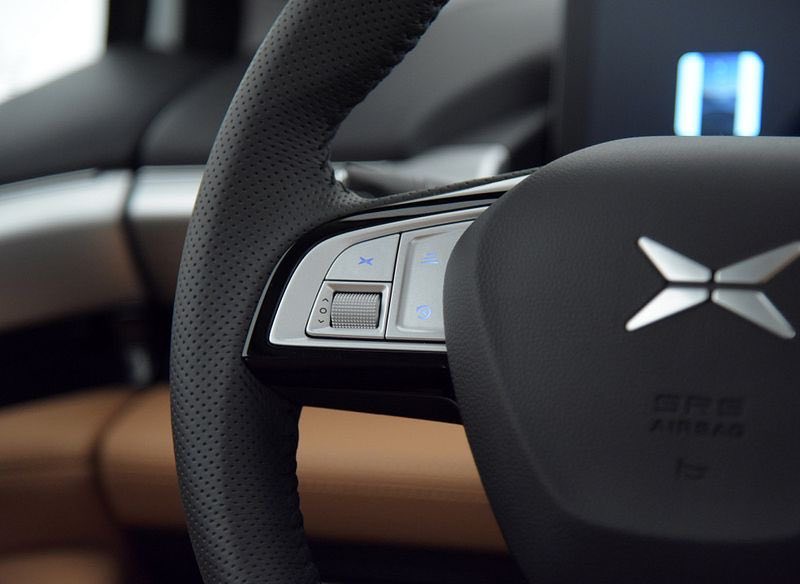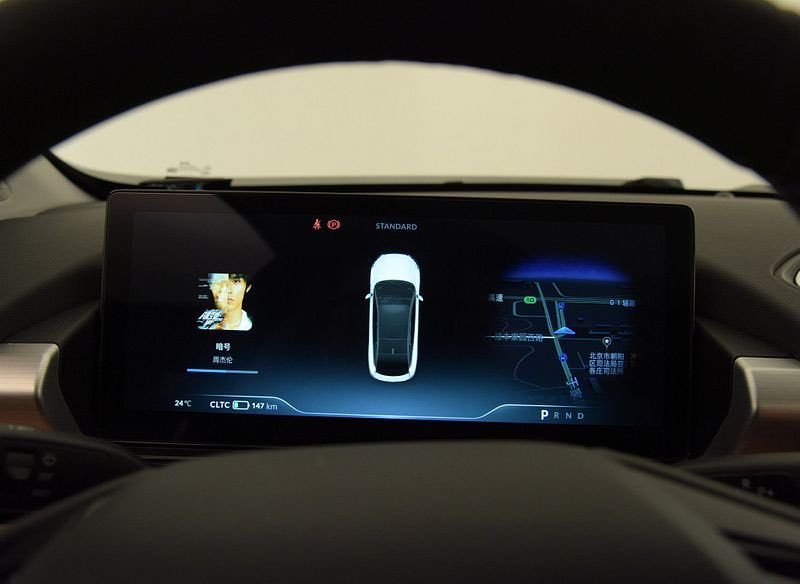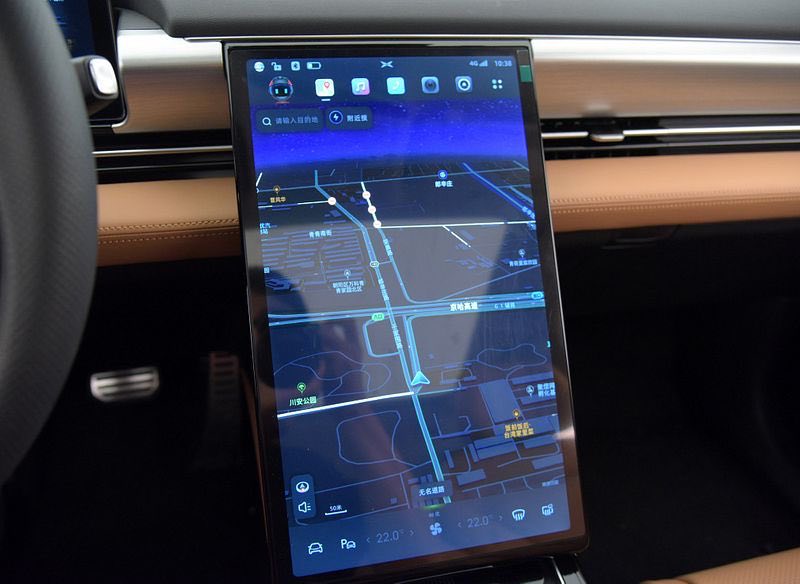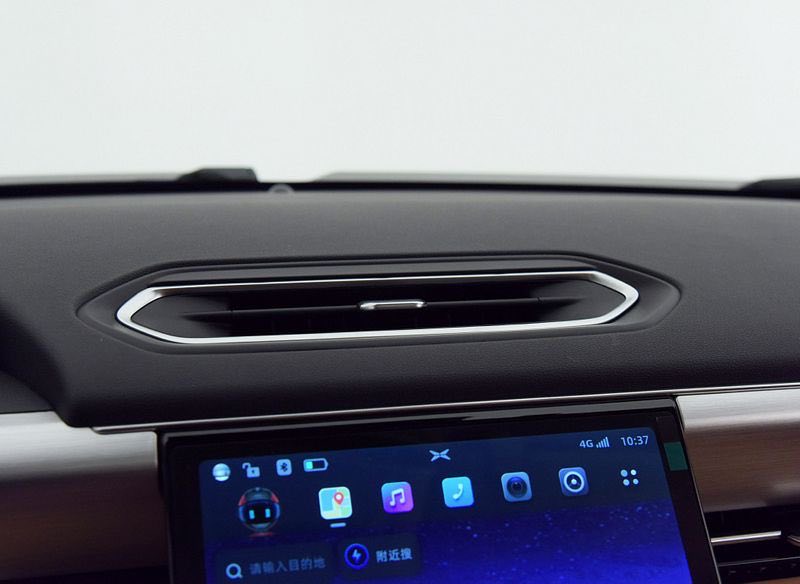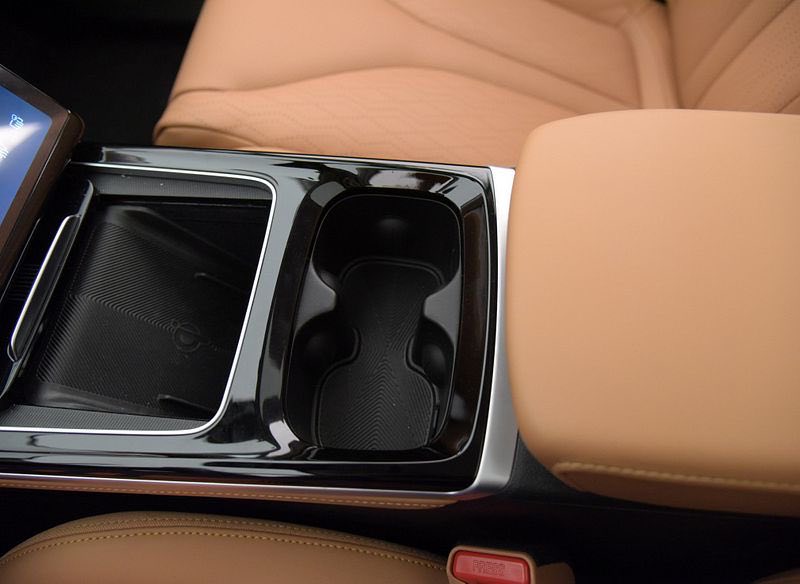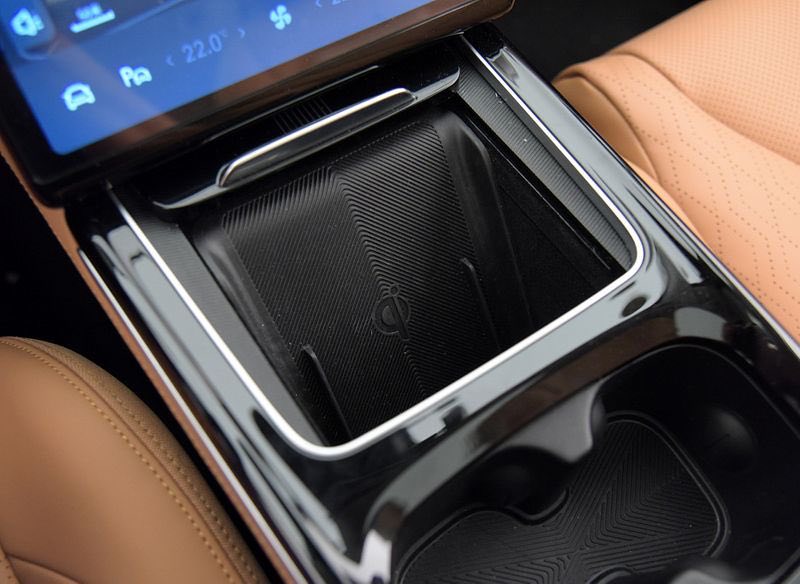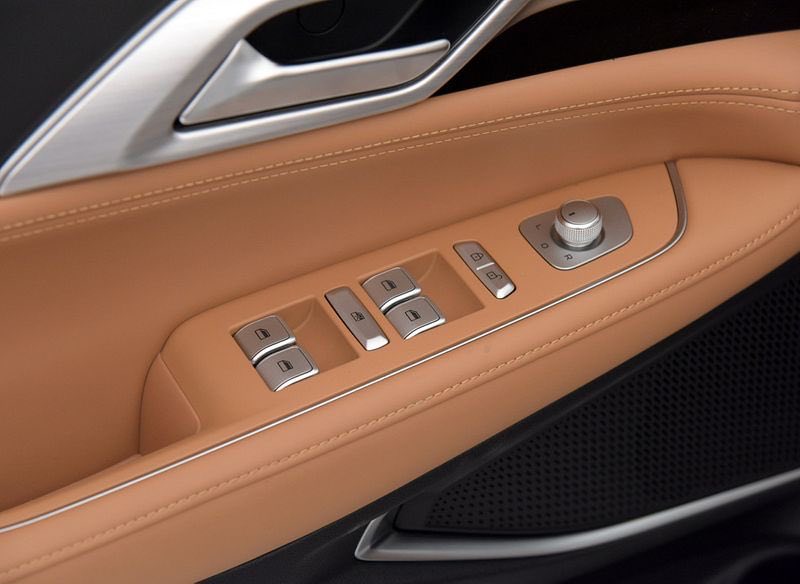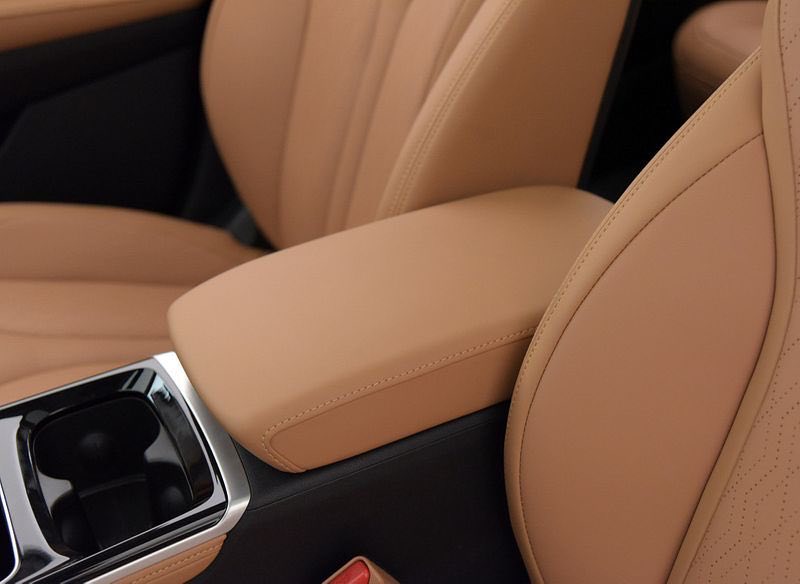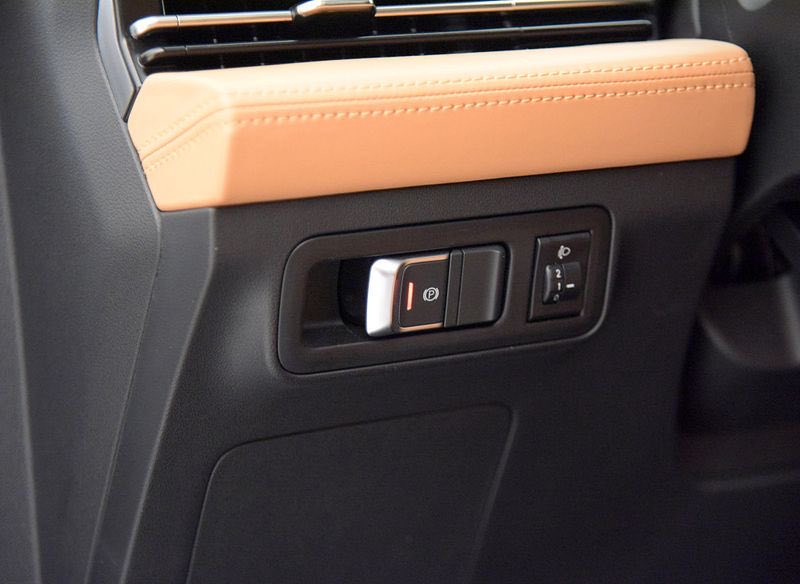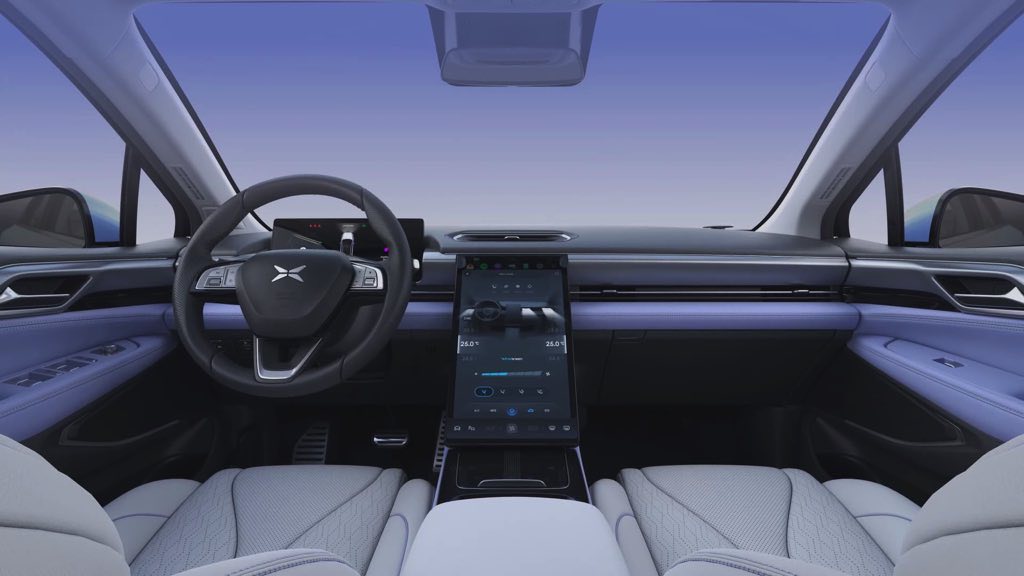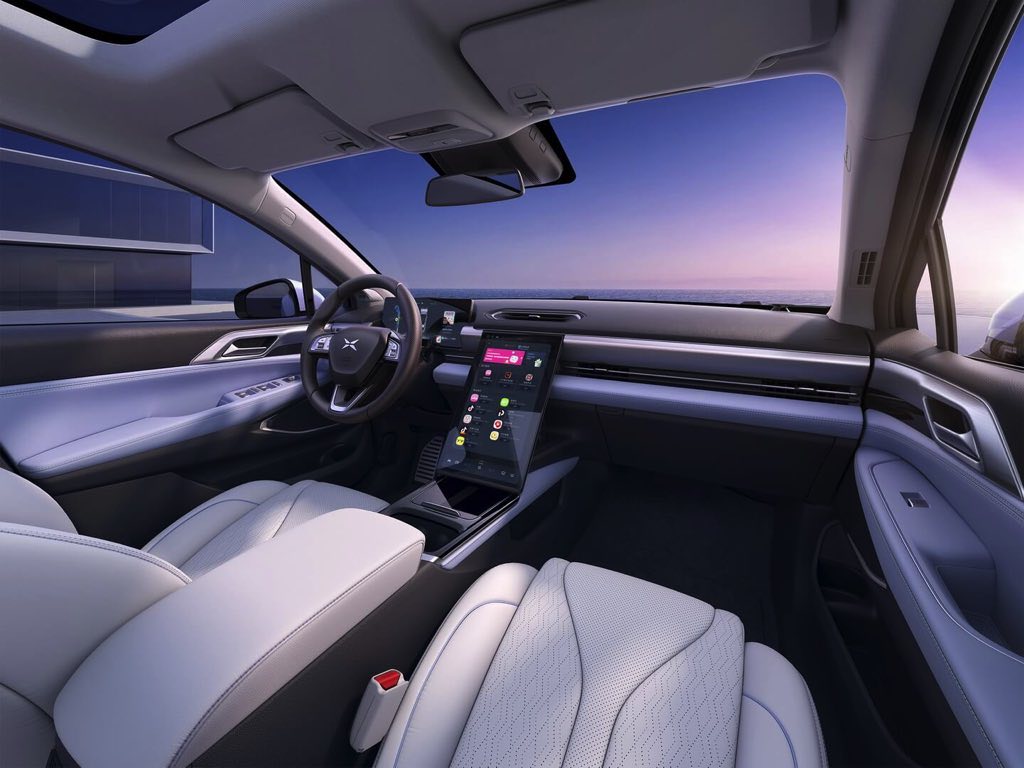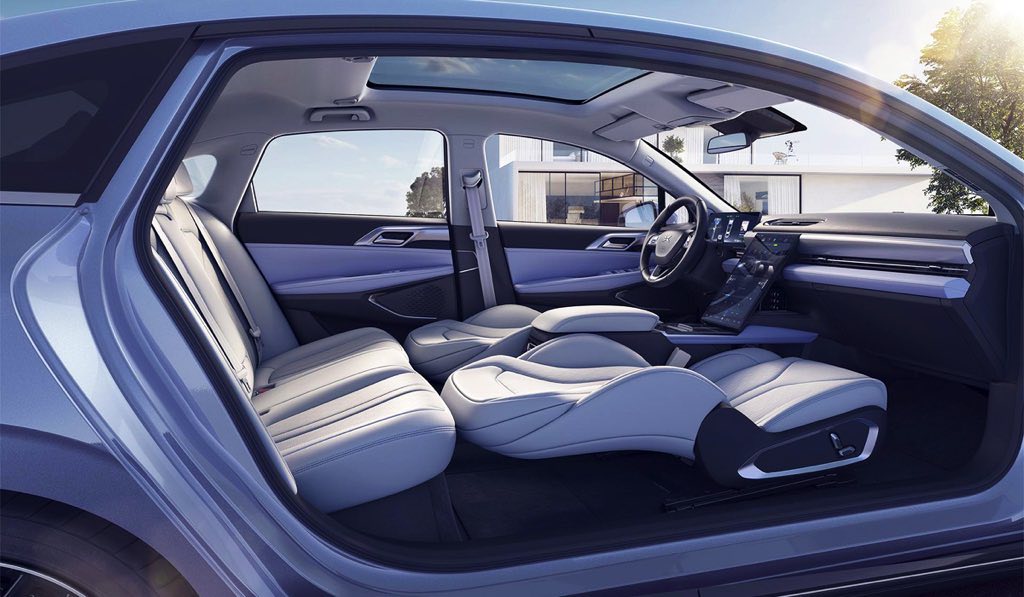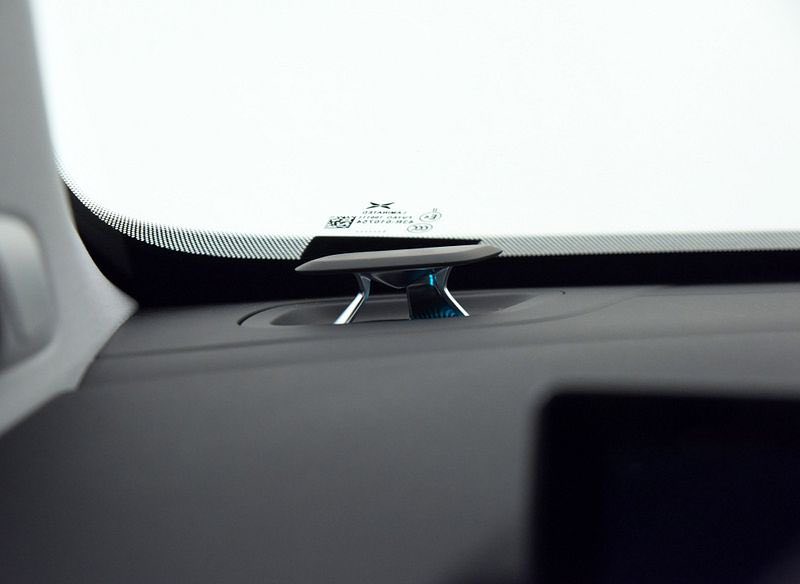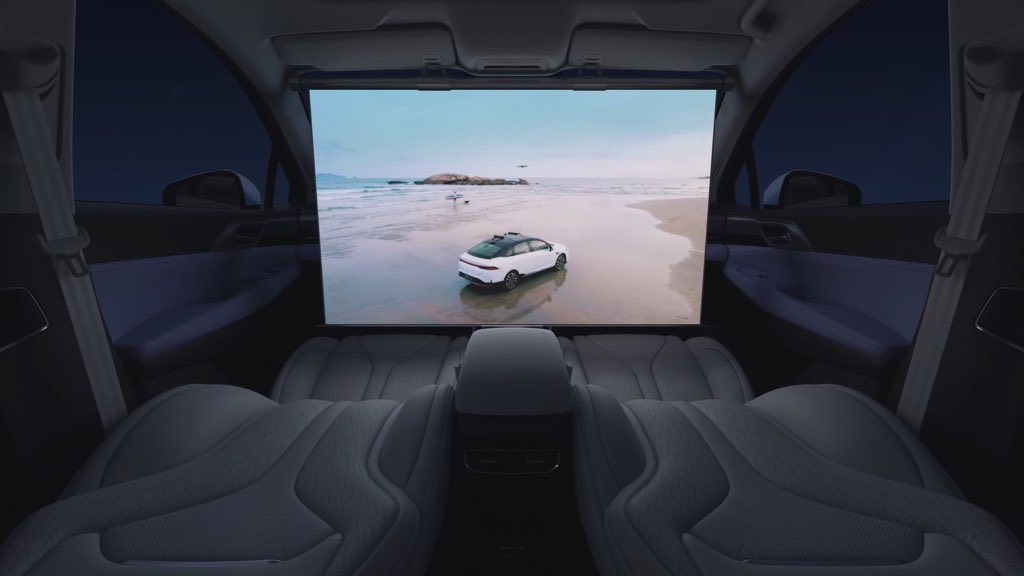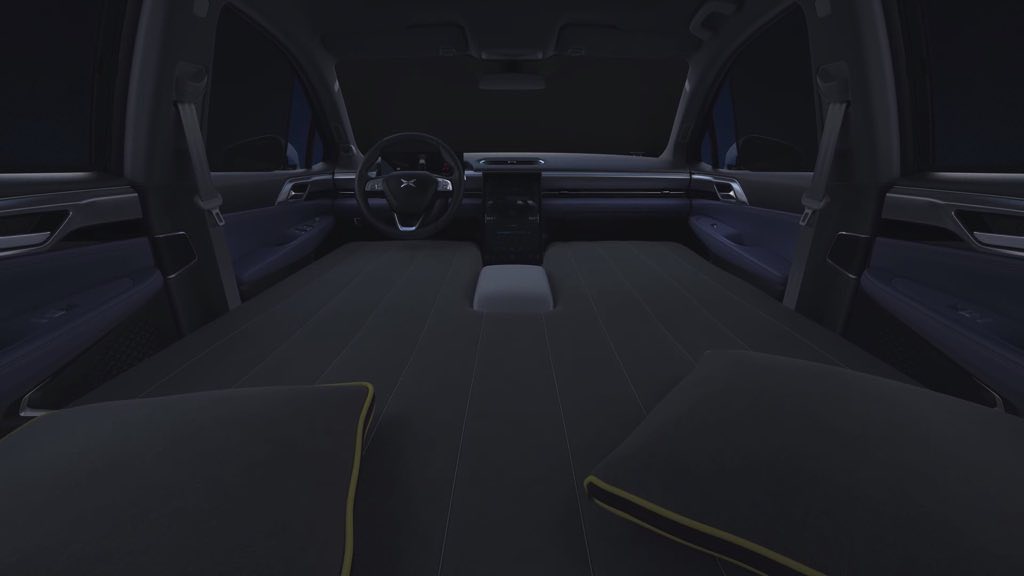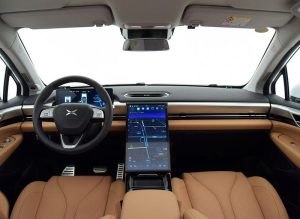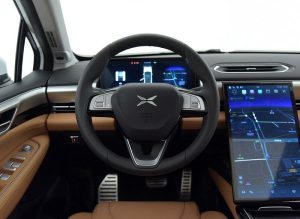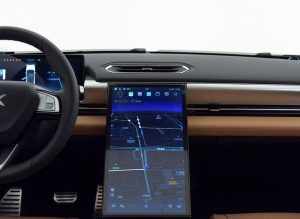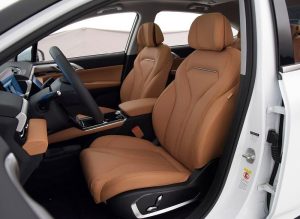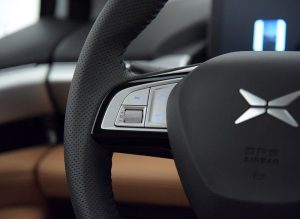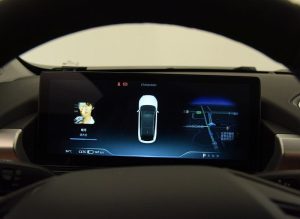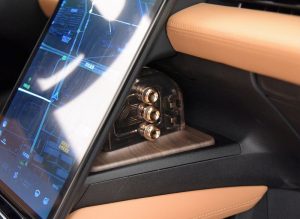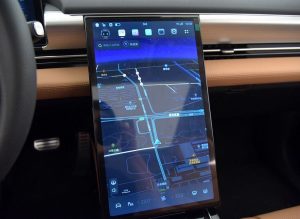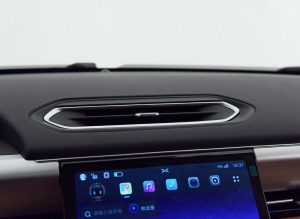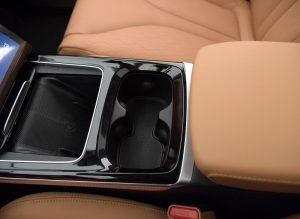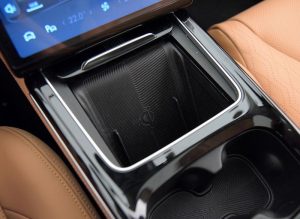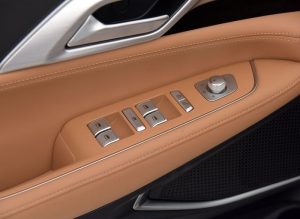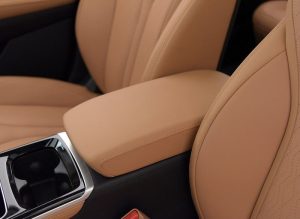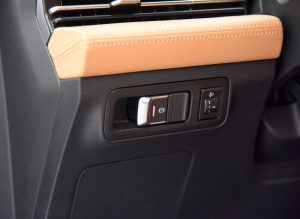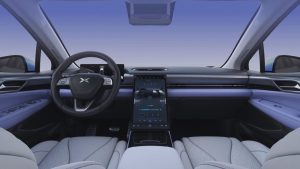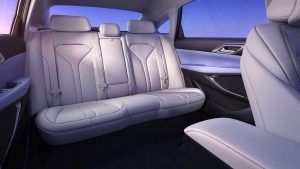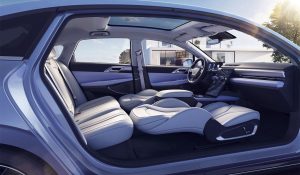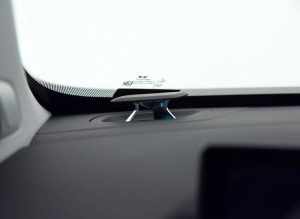XPENG P5
The XPENG P5 is an electric sedan produced by the Chinese electric vehicle manufacturer, XPENG. It was first unveiled in April 2021 and is set to go on sale in China in the second half of 2021.
The XPENG P5 is designed to be a high-tech, intelligent vehicle, with advanced driver assistance systems and connectivity features. It features a 14.9-inch touchscreen display, which is one of the largest in the industry, and can be used to control various functions of the car, including the air conditioning, entertainment system, and navigation.
The P5 also features autonomous driving capabilities, with the ability to navigate on highways, park itself, and even pick up passengers from a designated location. It has a range of up to 385 km on a single charge and can accelerate from 0 to 100 km/h in just 7.5 seconds.
Overall, the XPENG P5 is a high-tech electric sedan that offers advanced features and capabilities at an affordable price. It is designed to appeal to tech-savvy buyers who are looking for a stylish and intelligent vehicle. However, it is currently only available in China, and it is unclear if or when it will be available in other markets.
| Performance | |
| Acceleration 0 – 100 km/h | 7.5 sec |
| Top Speed | 150 km/h |
| Electric Range | 385 km |
| Total Power | 155 kW (211 PS) |
| Total Torque | 310 Nm |
| Drive | Front |
| Battery and Charging | |
| Battery Capacity | 66.2 kWh |
| Battery Useable | 60.0 kWh |
| Europe | |
| Charge Port | Type 2 |
| Charge Power | 11 kW AC |
| Charge Time (0->385 km) | 6h30m |
| Charge Speed | 60 km/h |
| Fastcharge Port | CCS |
| Fastcharge Power (max) | 80 kW DC |
| Fastcharge Time (39->308 km) | 44 min |
| Fastcharge Speed | 360 km/h |
| Energy Consumption | |
| EVDB Real Range | |
| Range | 385 km |
| Vehicle Consumption | 156 Wh/km |
| CO2 Emissions | 0 g/km |
| Vehicle Fuel Equivalent | 1.8 l/100km |
| WLTP Ratings (TEL) | |
| Range | 465 km |
| Rated Consumption | 148 Wh/km |
| Vehicle Consumption | 129 Wh/km |
| CO2 Emissions | 0 g/km |
| Rated Fuel Equivalent | 1.7 l/100km |
| Vehicle Fuel Equivalent | 1.4 l/100km |
| WLTP Ratings (TEH) | |
| Range | 445 km |
| Rated Consumption | 155 Wh/km |
| Vehicle Consumption | 135 Wh/km |
| CO2 Emissions | 0 g/km |
| Rated Fuel Equivalent | 1.7 l/100km |
| Vehicle Fuel Equivalent | 1.5 l/100km |
| TEL = Test Energy Low | TEH = Test Energy High | |
|
Rated = official figures as published by manufacturer. Rated consumption and fuel equivalency figures include charging losses.
|
|
|
Vehicle = calculated battery energy consumption used by the vehicle for propulsion and on-board systems.
|
|
| Real Energy Consumption Estimation between 106 – 218 Wh/km | |
| City – Cold Weather | 164 Wh/km |
| Highway – Cold Weather | 218 Wh/km |
| Combined – Cold Weather | 188 Wh/km |
| City – Mild Weather | 106 Wh/km |
| Highway – Mild Weather | 164 Wh/km |
| Combined – Mild Weather | 133 Wh/km |
|
Energy use for each trip will vary considerably depending on the driver and the conditions. Therefore, we have provided a range of estimates which can be useful in developing an understanding of the potential benefits of this technology.
|
|
| Dimensions and Weight | |
| Length | 4808 mm |
| Width | 1840 mm |
| Width with mirrors | No Data |
| Height | 1520 mm |
| Wheelbase | 2768 mm |
| Weight Unladen (EU) | 1790 kg |
| Gross Vehicle Weight (GVWR) | 2140 kg |
| Max. Payload | 425 kg |
| Cargo Volume | 450 L |
| Cargo Volume Max | No Data |
| Cargo Volume Frunk | 0 L |
| Roof Load | No Data |
| Tow Hitch Possible | No Data |
| Towing Weight Unbraked | No Data |
| Towing Weight Braked | No Data |
| Vertical Load Max | No Data |
| Miscellaneous | |
| Seats | 5 people |
| Isofix | Yes, 2 seats |
| Turning Circle | No Data |
| Platform | No Data |
| Car Body | Sedan |
| Segment | D – Large |
| Roof Rails | No Data |
| EV Dedicated Platform | No Data |
Home and Destination Charging (0 -> 100%)
A public charging station is required to use the highest possible charging rate. The EVSE/charging station’s charging capacity affects how long it takes to fully charge the battery. The table below shows all possible options for fully charging the XPENG P5.
In Europe, plugging an electric car into an outlet is often as easy as plugging it into a household outlet, but there are differences from country to country. The table below shows the different ways to charge the XPENG P5, but in some countries some chargers may not be available.
Type 2 (Mennekes – IEC 62196)

| Charging Point | Max. Power | Power | Time | Rate |
| Wall Plug (2.3 kW) | 230V / 1x10A | 2.3 kW | 30h45m | 13 km/h |
| 1-phase 16A (3.7 kW) | 230V / 1x16A | 3.7 kW | 19h15m | 20 km/h |
| 1-phase 32A (7.4 kW) | 230V / 1x32A | 7.4 kW | 9h45m | 39 km/h |
| 3-phase 16A (11 kW) | 400V / 3x16A | 11 kW | 6h30m | 59 km/h |
| 3-phase 32A (22 kW) | 400V / 3x16A | 11 kW | 6h30m | 59 km/h |
Fast Charging (10 -> 80%)
If you want to enjoy driving an electric car, one of the most important features to consider is the number of miles per hour the car can travel while charged. This is called the “range” of the car. All electric cars have a certain range, even if they are 100% charged. This is because they do not have an internal combustion engine to lean on if you need to drive a long distance.
Max. Power: The maximum power provided by the charging point
Avg. Power: The average power provided by the charging point during a session of 10% to 80%.
Time: the time it takes to charge from 10% to 80%
Speed: the average charging rate during the session of 10% to 80%
Combined Charging System (CCS Combo 2)
| Charging Point | Max. Power | Avg. Power | Time | Rate |
| CCS (50 kW DC) | 50 kW | 40 kW | 66 min | 240 km/h |
| CCS (100 kW DC) | 80 kW | 60 kW | 44 min | 360 km/h |
| CCS (150 kW DC) | 80 kW | 60 kW | 44 min | 360 km/h |
| Brand | XPENG |
| Model | P5 |
| Body Style | Sedan |
| Car Engine | electric |
| Motor power | 155 |
| Maximum Torque, Nm | 310 |
| Battery Energy, kWh | 66.2 |
| Power reserve (NEDC/EPA/WLTP), km | - / - / 385 |
| Level Charging (230/400/DC), hours | 9.45 / 6.30 / 0.44 |
| Electrical Acceleration, 0-100 km/h (0-62.1 mph) in sec | 7.5 |
| Top Speed, km/h | 150 |
